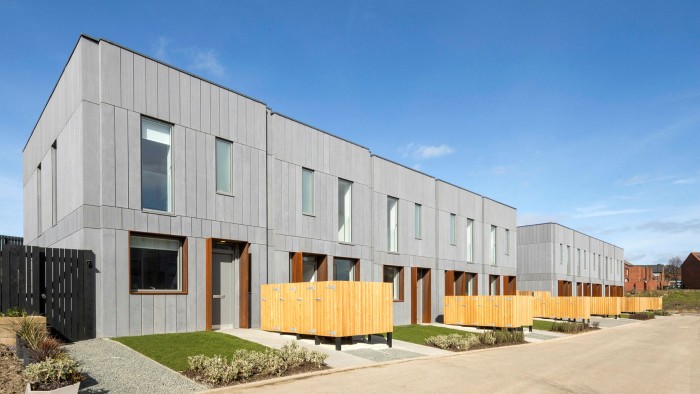
Prefabricated Housing: Revolutionizing Modern Living Spaces
In recent years, Prefabricated housing has emerged as a trendsetter in modern construction. Offering innovative solutions for home enthusiasts, these homes combine efficiency, sustainability, and affordability. For many, the dream of owning a home has become more accessible, thanks in part to the advances in Prefabricated housing.
At the heart of this revolution is the promise of faster build times, reduced construction costs, and minimal environmental impact. Whether you’re exploring options for a new home or simply curious about the latest in housing technology, there’s much to learn about these fascinating structures.

What Exactly is Prefabricated Housing?
Prefabricated housing, often referred to as prefab homes, are buildings constructed using sections made in a factory setting. These sections or modules are then transported to the desired location and assembled on-site. Unlike traditional construction, which builds a home piece by piece on location, prefab homes are largely built in a controlled environment, ensuring precision and quality.
The Growing Popularity of Prefab Homes
The popularity of prefab homes is steadily rising. Not only are they cost-effective, but they also mirror the increasing demand for sustainable and stylish living. According to [ArchDaily](https://www.archdaily.com/tag/archdaily-topic-2024-modular-housing), the focus on modular construction in 2024 embodies a shift towards smarter, eco-friendly living spaces.
Advantages of Prefabricated Housing
Prefab homes offer numerous advantages that make them an appealing choice for modern homeowners:
- Time Efficiency: Reduced construction time leads to quicker completion and occupancy.
- Cost-Effective: Building in bulk in a controlled setting often results in savings passed on to the consumer.
- Environmental Benefits: Less waste and sustainable materials contribute to a smaller carbon footprint.
- Design Flexibility: Multiple styles and customization options are available to suit individual preferences.
The Process Behind Prefabricated Homes
Understanding the process of creating a prefab home provides insight into its efficiency and appeal:
1. Design and Planning
The journey begins with a comprehensive design phase. Homeowners work with architects and designers to create a tailored plan that meets their needs. This stage ensures that each home is unique, with considerations for layout, style, and functionality.
2. Factory Construction
The magic of prefab homes happens in the factory. Here, modules are crafted under stringent quality controls, allowing for precision that is hard to match with traditional on-site constructions.
3. Transportation and Assembly
Once the modules are complete, they are transported to the home site. This step requires coordination and specialized equipment to ensure modules are placed correctly and safely assembled.
Innovative Designs in Prefabricated Housing
Prefab homes are no longer one-size-fits-all. Modern technology allows for a range of designsfrom minimalist studios to expansive family homes, ensuring every lifestyle and taste is catered for.
- Minimalist Micro-Homes: Perfect for those embracing a minimalist lifestyle, these homes make the most of smaller spaces.
- Luxury Prefabs: High-end materials and finishes for those who desire luxury without long wait times.
- Eco-Friendly Designs: Homes focused on sustainability, using green technology and materials to limit environmental impact.
Challenges Facing Prefabricated Housing
While the benefits are numerous, prefab housing does face challenges:
Regulatory Hurdles: Zoning laws and building code requirements can vary greatly by location, impacting feasibility and installation.
Perception: There is still a misconception that prefab homes are lesser than traditionally built homes. However, this perception is changing as more people become aware of their value.
Conclusion: The Future is Prefabricated
Prefabricated housing has undoubtedly made its mark on the construction industry. As technology advances and sustainability becomes a focus, it’s likely that more people will recognize the benefits of prefab homes. Exploring future possibilities, it is exciting to think about what innovations are yet to come in modular construction.

FAQs
Why are prefabricated homes considered eco-friendly?
Prefab homes generate less construction waste due to precision manufacturing. This process, combined with the use of sustainable materials, results in homes that often have a smaller carbon footprint than traditional builds.
Are prefabricated homes more affordable than traditional homes?
Generally, yes. The controlled environment of a factory setting can lead to cost savings on labor and materials, which can make prefabricated homes more affordable.
Can prefabricated homes withstand harsh weather conditions?
Yes, prefab homes are designed to meet or exceed local building codes, ensuring they can withstand weather conditions specific to their location.
This article contains affiliate links. We may earn a commission at no extra cost to you.